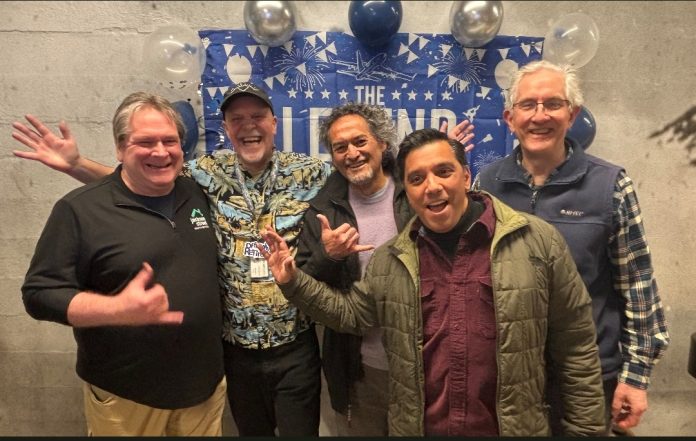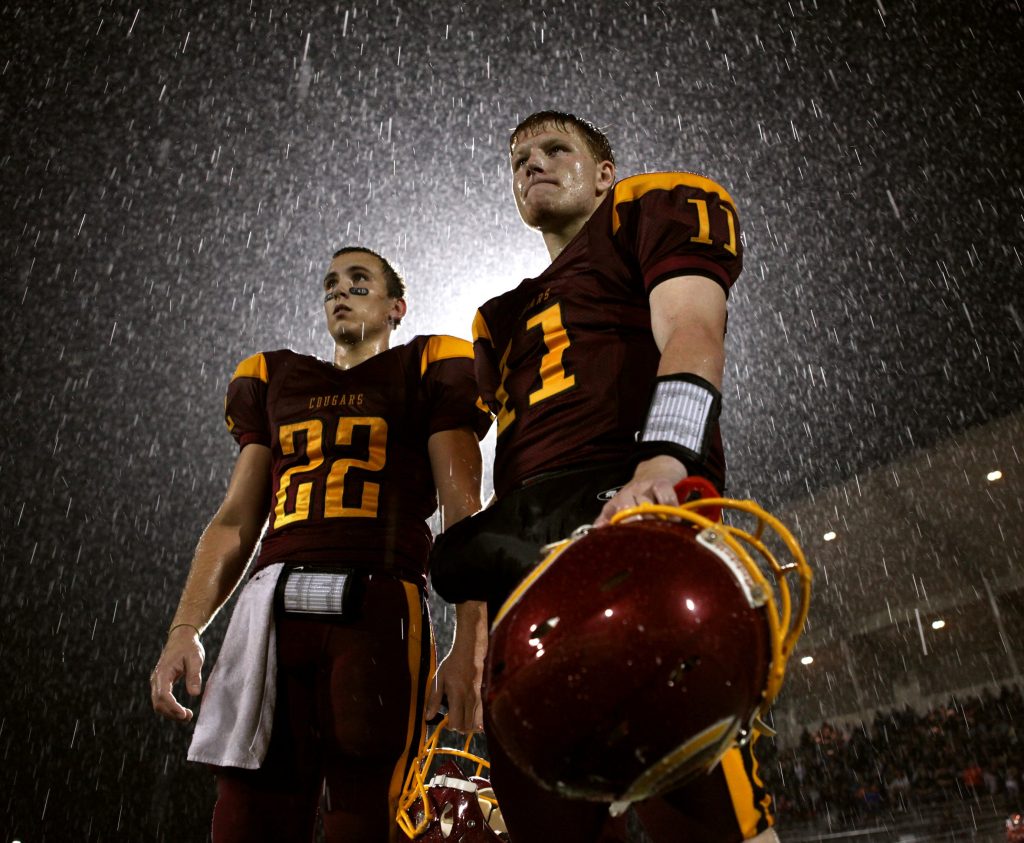
As Tony Overman’s distinguished photojournalism career unfolded, preparation became a key ingredient to his photographic philosophy. Overman recalls times he would brainstorm the potential moments and angles he could capture ahead of an assignment, paying close attention to faces, and facial expressions that would illustrate the humanity of any given story. And now, after four decades of snapping the latest news and human-interest stories across the Pacific Northwest, Overman is ready to turn a new page in retirement.
Throughout the Decades, Overman Captured Football, War in Iraq and Everyday Portraits
In the first act of his career, Overman worked for multiple Oregon-based publications, including the News-Register in McMinnville, Albany Democrat-Herald and Corvallis Gazette-Times. In 1997, Overman became a photographer for The Olympian, and eventually started to split time between The Olympian and its sister newspaper in Tacoma, The News Tribune.
As a news photographer, Overman looked through the lens of many major sporting events, including multiple Super Bowl and Rose Bowl appearances. In 2006, Overman also took on a special assignment overseas, following the Fort Lewis-based 3rd Infantry Brigade, 2nd Infantry Division that was on deployment in Iraq. Overman recalls the experience as educational, interested in the daily life of the soldiers, balanced with the pressures of being far from home and the inherent danger of operating around a war zone.
Despite photographing many high-profile moments over the years, Overman says that some of his favorite stories provided more opportunity to build rapport and connection, including in-depth portraits of everyday Washingtonians. At times, Overman would follow his story subjects over the span of several months or years, allowing Overman to connect with the subject, their family and friends, while also exploring fresh methods of storytelling.
“I never knew when to quit a photo story,” says Overman. “After it published, I still knew the people. They’re still doing their life. I still wanted to go take more photos of them.”
This included a local feature on the family of Charity and Kathleen Lincoln, conjoined twins from Lacey who were set to undergo separation surgery. Years later, Overman made an updated story on the twins and their life after separation.
Another long-term story that had a profound impact on Overman was a feature of up-and-coming professional boxer Eloy Perez, who was from Thurston County. Chronicling Perez’s success as a then-undefeated boxer, Overman would travel along the West Coast to photograph Perez’s matches, leading to a world championship match in St. Louis, Missouri. Perez lost the match, which was a catalyst for a series of personal hardships, including suspensions from boxing, legal trouble for driving under the influence and deportation to Mexico. After arriving in Mexico, Perez was killed and Overman accompanied Perez’s sister and girlfriend to Mexico to claim Perez’s body. During this trip Overman took on a new angle of visual storytelling, photographing primarily on an iPhone.

Tony Overman Built Community Through Photos of South Sound Festivals and Athletics
Overman also forged deep community roots while covering annual festivals and high school sports. Overman recalls instances of being recognized by former student athletes who enjoyed seeing their athletic career play out in newspaper photos. And in the wake of Overman’s retirement announcement, he started to receive grateful comments, which thanked him for many years of covering beloved events, like Olympia’s Pet Parade.
“Hearing that from people and knowing that that was special to them means so much to me,” says Overman.
One of Overman’s personal favorite photographs captured a group of elk being moved from a habitat near Elma to a habitat near Mount Rainier by the Washington Department of Fish and Wildlife. While Fish and Wildlife staff were attempting to tranquilize the elk from a low-flying helicopter, Overman’s main objective was to capture both the elk and helicopter close together, within a tight frame.
“And it ended up being the most amazing photo that no one has ever taken anything like it,” explains Overman. “And I think that’s your goal as a photographer, is to take something that no one’s ever taken before. And my helicopter, elk photo was just where everything, the preparation and opportunity and everything, came together.”

After Career in Photojournalism and Advocacy, Tony Overman Makes Plans for Retirement
At times, Overman’s work extended beyond the lens into advocacy for photojournalists, including two terms as president of the National Press Photographers Association (NPPA) for 2006 and 2007. Overman considers this position as one of the most important of his career, acting as the voice for thousands of photojournalists, including an opportunity to testify before Congress on the presence of media and photojournalism in national parks, while NPPA president.
In retirement, Overman plans to find ways to get involved and give back to the community, while also taking road trips along the West Coast with his three dogs, Chowder, Biscuit and Waffle. Overman will also be spending more time outdoors, fishing and teeing off with friends across the region’s many golf courses. Looking back, Overman feels a sense of gratitude for being invited into people’s unique circumstances and documenting their journey, and that connection with others is going to be one of the things Overman will miss the most in retirement.




















































